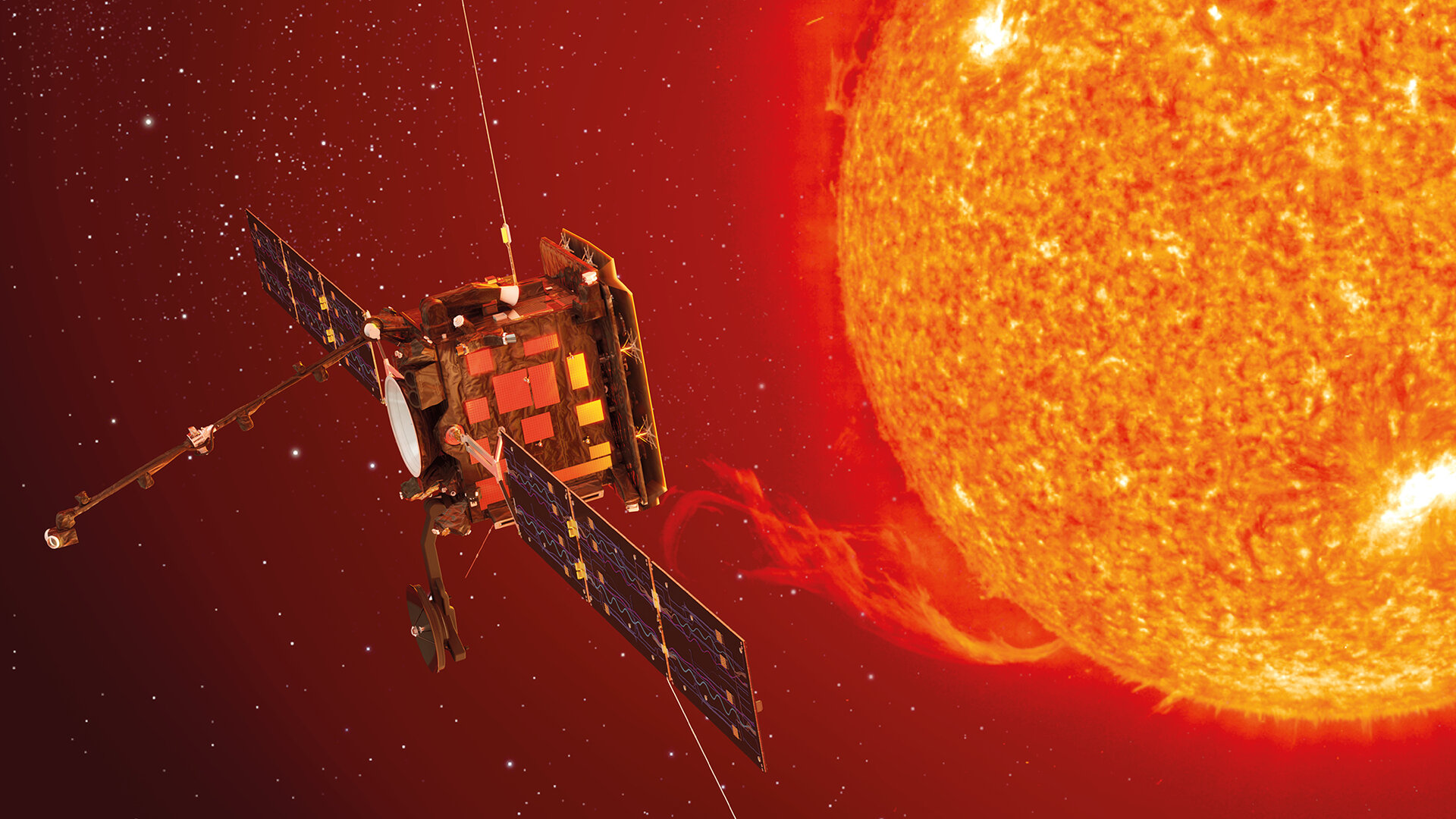Solar Orbiter Mission
Solar Orbiter is a space mission of international collaboration between ESA and NASA to study the Sun, its outer atmosphere, and drivers of the constant outflow of solar wind that affects Earth.

Artistic impression of Solar Orbiter in front of the Sun (not to scale). [Image credit: ESA/NASA/SOHO]
Solar Orbiter was launched on 9 February 2020 carrying a scientific payload of ten instruments (as listed below) on its voyage around the Sun. Six instruments are remote sensing, which "see" the Sun and return imagery. The other four are in situ instruments, which work by "touch". The suite of instruments measures solar wind plasma, fields, waves, and energetic particles close enough to the Sun to ensure that they are still relatively pristine – helping to provide information on what's actually streaming off the Sun before it evolves in the interplanetary space. They measure the environment immediately surrounding the spacecraft, including solar wind plasma — the electrified gas streaming from the Sun — and the electric and magnetic fields embedded within it. The ten instruments work together to provide an unprecedented, comprehensive view of our star. The Solar Orbiter minimum perihelion of 0.28 AU, combined with the unique out-of-ecliptic viewing, Solar Orbiter will address a fundamental question of solar physics: How does the Sun create and control the heliosphere?
In situ (IS) instruments
- EPD: Energetic Particle Detector
- MAG: Magnetometer
- SWA: Solar Wind Analyzer Suite
- RPW: Radio and Plasma Waves
Remote sensing (RS) Instruments
- EUI: Extreme Ultraviolet Imager
- Metis
- PHI: Polarimetric and Helioseismic Imager
- SoloHI: Solar Orbiter Heliospheric Imager
- SPICE: Spectral Imaging of the Coronal Environment
- STIX: X-ray Spectrometer/Telescope
Two of the instruments, one IS and one RS, will observe the region between the Sun and spacecraft – the Radio and Plasma Wave instrument (RPW) and the Solar Orbiter Heliospheric Imager (SoloHI), respectively. These will provide a link between the remote and local observations and enable the determination of the physical connectivity between the Sun and the solar wind. The RS telescope instruments have fixed optics which means that they observe a fixed angular field of view (FOV ), but the field, in terms of solar radii, varies as a function of heliocentric distance thanks to the elliptical orbit of the mission.
The in situ instruments operate throughout each orbit, while remote sensing is confined to 30 days per orbit – in particular, periods when the spacecraft is at its greatest angles to the solar equator and during the closest approach to the Sun. During the nominal mission, Solar Orbiter views the Sun from latitudes of up to 24°. This enables the instruments to image the polar regions of the Sun clearly for the first time and make key measurements that will advance our understanding of the solar dynamo and the polarity reversal of the global magnetic field. After around eight years, Solar Orbiter will view the poles from solar latitudes higher than 30°, compared with 7° at best from the Earth.
The spacecraft makes a close approach to the Sun every five months. Around the closest approach, when traveling at its fastest, Solar Orbiter's speed puts it in sync with the Sun's rotation, positioning it for several days over roughly the same region of the solar atmosphere. Just as geostationary weather and telecommunications satellites are stationed over particular spots on Earth's surface, the spacecraft will seem to hover over the same spot on the Sun for a while. Solar Orbiter can therefore watch as magnetic activity moves around or builds up in the atmosphere, which can lead to powerful flares and eruptions.
